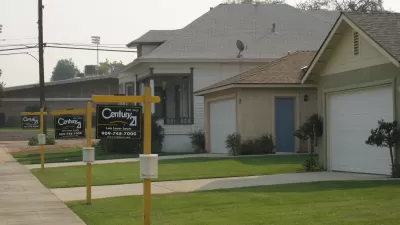Calling the property tax, "probably the most controversial tax in the United States," the Lincoln Institute of Land Policy and the Minnesota Center for Fiscal Excellence have released the "50-State Property Tax Comparison Study" for 2013.
The Lincoln Institute of Land Policy has released its "50-State Property Tax Comparison Study" in partnership with the Minnesota Center for Fiscal Excellence. The goal of the study, according to the Lincoln Institute's website, is to provide accurate data as a foundation for "sound governmental decision-making."
The study examines "effective property tax rates," defined as the actual tax payment as a percentage of market value. As quoted from a press release announcing the report, here are a few of the key points that exemplify the wide variations in property tax policy around the country:
- "Bridgeport, Connecticut continues to impose the highest taxes on median-value homes in urban cities, with an effective rate above 4 percent.
- "The lowest rate, in Columbia, South Carolina, is slightly above .6 percent."
- "The decline in real values in Detroit leaves it with high effective tax rates, but a new revaluation initiative in the city may reduce that rate in the future."
- "The New England region, with its heavy reliance on property taxes, has the highest effective homestead rates, but the Midwest leads with the highest effective rates on commercial property."
- "There was no change between 2012 and 2013 in the top 5 cities with the highest property tax bills on a median-value home."
FULL STORY: 50-State Property Tax Comparison Study

Alabama: Trump Terminates Settlements for Black Communities Harmed By Raw Sewage
Trump deemed the landmark civil rights agreement “illegal DEI and environmental justice policy.”

Study: Maui’s Plan to Convert Vacation Rentals to Long-Term Housing Could Cause Nearly $1 Billion Economic Loss
The plan would reduce visitor accommodation by 25% resulting in 1,900 jobs lost.

Planetizen Federal Action Tracker
A weekly monitor of how Trump’s orders and actions are impacting planners and planning in America.

Wind Energy on the Rise Despite Federal Policy Reversal
The Trump administration is revoking federal support for renewable energy, but demand for new projects continues unabated.

Passengers Flock to Caltrain After Electrification
The new electric trains are running faster and more reliably, leading to strong ridership growth on the Bay Area rail system.

Texas Churches Rally Behind ‘Yes in God’s Back Yard’ Legislation
Religious leaders want the state to reduce zoning regulations to streamline leasing church-owned land to housing developers.
Urban Design for Planners 1: Software Tools
This six-course series explores essential urban design concepts using open source software and equips planners with the tools they need to participate fully in the urban design process.
Planning for Universal Design
Learn the tools for implementing Universal Design in planning regulations.
Caltrans
Smith Gee Studio
Institute for Housing and Urban Development Studies (IHS)
City of Grandview
Harvard GSD Executive Education
Toledo-Lucas County Plan Commissions
Salt Lake City
NYU Wagner Graduate School of Public Service





























